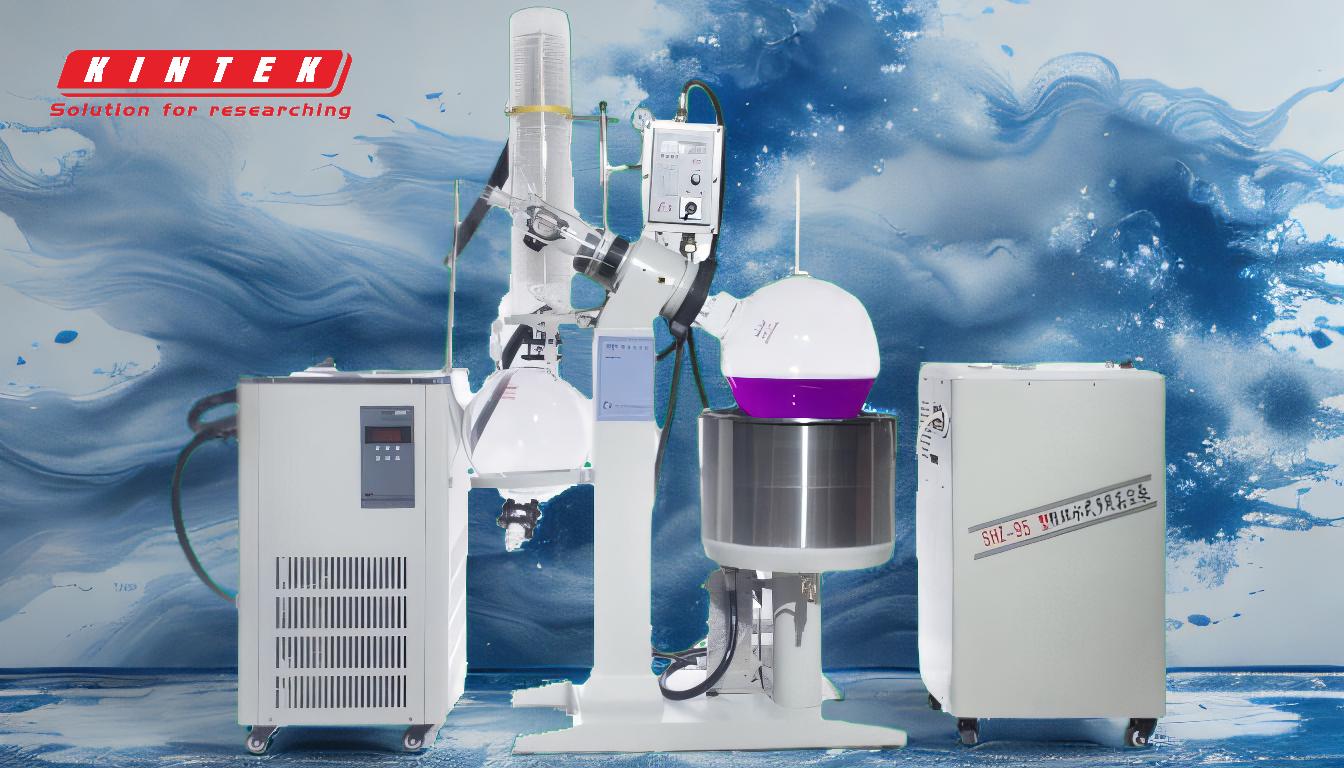The vacuum pump is a critical component of a rotary evaporator, primarily used to create a reduced pressure environment within the system. This reduction in pressure lowers the boiling point of the liquid being processed, enabling faster evaporation at lower temperatures. This is particularly beneficial for heat-sensitive materials, as it minimizes the risk of thermal degradation. Additionally, the vacuum pump allows for precise control over the evaporation process, improving efficiency and safety. By removing air and creating a partial vacuum, the pump also aids in maintaining the purity of the extracted solvents and ensures a continuous and smooth operation of the rotary evaporator.
Key Points Explained:

-
Creation of Reduced Pressure Environment
- The vacuum pump removes air from the rotary evaporator system, creating a partial vacuum.
- This reduced pressure lowers the boiling point of the liquid, allowing it to evaporate at a lower temperature than it would under normal atmospheric conditions.
- Example: A solvent that normally boils at 100°C might boil at 40°C under reduced pressure, making the process more energy-efficient and gentle.
-
Lower Temperature Evaporation
- By lowering the boiling point, the vacuum pump enables evaporation to occur at much lower temperatures.
- This is especially important for heat-sensitive compounds, such as pharmaceuticals or natural extracts, which could degrade or react at higher temperatures.
- Lower temperatures also reduce the risk of unwanted chemical reactions, ensuring the integrity of the sample.
-
Energy Efficiency
- The reduced pressure environment requires less energy to evaporate the solvent, as the process occurs at lower temperatures.
- This makes the rotary evaporator more energy-efficient compared to traditional evaporation methods that rely on high heat.
-
Gentle Processing of Heat-Sensitive Materials
- Many compounds, such as enzymes, proteins, or volatile organic compounds, are sensitive to high temperatures.
- The vacuum pump allows these materials to be processed gently, minimizing the risk of degradation or loss of functionality.
-
Precise Control Over Evaporation Speed
- The vacuum pump provides a quickly adjustable parameter to influence the evaporation rate.
- By adjusting the vacuum level, users can control how quickly or slowly the solvent evaporates, allowing for fine-tuning of the process based on the specific requirements of the material being processed.
-
Improved Safety
- Lower operating temperatures reduce the risk of overheating, which can lead to safety hazards such as fires or explosions.
- The vacuum pump also helps maintain a controlled environment, preventing the release of harmful vapors into the workspace.
-
Maintenance of Solvent Purity
- The vacuum pump removes air and other gases from the system, ensuring that the extracted solvents remain pure and uncontaminated.
- This is particularly important in applications such as essential oil extraction or pharmaceutical production, where purity is critical.
-
Continuous Operation
- By creating a partial vacuum, the vacuum pump enables a continuous feed system, allowing the rotary evaporator to operate smoothly without interruptions.
- This is essential for large-scale or industrial applications where efficiency and consistency are key.
-
Role in Condensation
- The vacuum pump is also applied to the condenser to increase air pressure, which slows down the movement of the vaporized gas.
- This helps in the efficient trapping and re-liquefaction of the vapor, ensuring that the solvent is effectively recovered and collected.
-
Operational Sequence
- The vacuum pump is typically turned on before starting the motor that rotates the evaporation flask.
- This ensures that the system is already under reduced pressure when the evaporation process begins, optimizing efficiency and performance.
In summary, the vacuum pump is indispensable in a rotary evaporator, as it enables efficient, gentle, and controlled evaporation of solvents at lower temperatures. Its ability to create a reduced pressure environment not only protects heat-sensitive materials but also enhances energy efficiency, safety, and process control. Whether in a laboratory or industrial setting, the vacuum pump plays a vital role in ensuring the success of the rotary evaporation process.
Summary Table:
| Key Benefit | Description |
|---|---|
| Reduced Pressure Environment | Lowers boiling points, enabling evaporation at lower temperatures. |
| Lower Temperature Evaporation | Protects heat-sensitive materials from degradation. |
| Energy Efficiency | Requires less energy compared to high-heat evaporation methods. |
| Precise Control | Adjustable vacuum levels for fine-tuning evaporation speed. |
| Improved Safety | Reduces risks of overheating, fires, and harmful vapor release. |
| Solvent Purity | Ensures extracted solvents remain uncontaminated. |
| Continuous Operation | Enables smooth, uninterrupted processing for large-scale applications. |
Learn how a vacuum pump can optimize your rotary evaporation process—contact our experts today!










